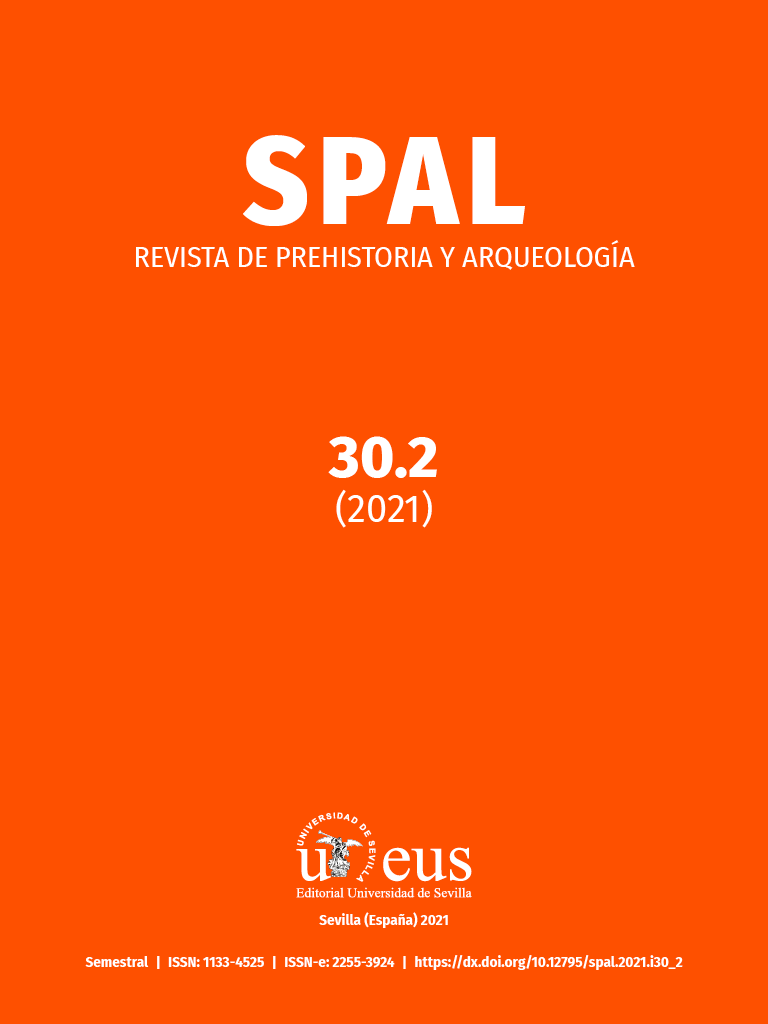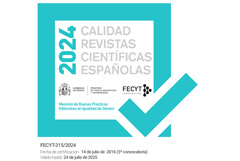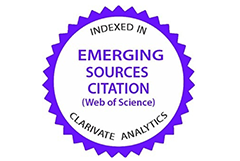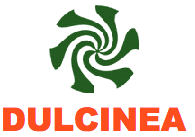A closer look at the forgotten bones of the Dolmen of Pedras Grandes (Odivelas, Portugal). (Examining old human remains 7)
DOI:
https://doi.org/10.12795/spal.2021.i30.16Palabras clave:
Neolítico Tardío, Iberia Occidental, Dolmen, Fuentes documentales antiguas, Perfil biológico, Estado de saludResumen
El Dolmen de Pedras Grandes (Odivelas, Lisboa, Portugal) fue descubierto y excavado a finales del siglo XIX por Carlos Ribeiro. En 2004, este monumento fue re excavado por Rui Boaventura donde se realizó un estudio completo del sitio. El Dolmen de Pedras Grandes presenta una cámara poligonal y un pasaje muy corto, y puede haber tenido un corto periodo de actividad funeraria en el IV milenio, como indican las fechas de radiocarbono y los artefactos “arcaicos”. Las dataciones relativas y absolutas permiten asignar a este monumento a la fase inicial de la monumentalidad funeraria megalítica en el centro-sur de Portugal. Además, la recuperación de material óseo humano ofrece la oportunidad de obtener datos sobre el perfil biológico y el estado de salud de la comunidad que enterró a sus muertos en tumbas megalíticas.
Descargas
Citas
Acsádi, G. and Nemeskéri, J. (1970) History of human life span and mortality. Budapest: Akadémiai Kiadó.
AlQahtani, S. J.; Hector, M. and Liversidge, H. (2010) “Brief communication: the London atlas of human tooth development and eruption”, American Journal of Physical Anthropology, 142 (3), pp. 481-490. https://doi.org/10.1002/ajpa.21258
Alt, K.W; Zesch, S; Garrido-Pena, R; Knipper, C; Szécsényi-Nagy A. and Roth C. (2016) “A community in life and death: the Late Neolithic megalithic tomb at Alto de Reinoso (Burgos, Spain)”, PloSOne 11, pp. 1-32. https://doi.org/10.1371/journal.pone.0146176
Andrade, M.A. (2011) “O sítio pré-histórico do Monte da Pedra (Mina, Amadora): identificação e caracterização de uma possível oficina de talhe neolítica”, Revista Portuguesa de Arqueologia 14, pp. 5-39.
Andrade, M.A. and Cardoso, M.S. (2004) “O sítio pré-histórico da Pedreira do Aires (Ramada, Odivelas): notícia da sua identificação”. Revista Portuguesa de Arqueologia 7 (1), pp. 137-163.
Aranda, G; Díaz-Zorita Bonilla M.; Hamilton, D.; Milese, L. and Sánchez Romero, M. (2020) “Radiocarbon dating approach to the deposition and removal of human bone remains in megalithic monuments”, Radiocarbon, 1-16. https://doi.org/10.1017/RDC.2020.67
Beck, J; Díaz-Zorita Bonilla, M.; Bocherens, H. and Díaz-del-Río, P. (2018) ”Feeding a third millennium BC mega-site: Bioarchaeological analyses of palaeodiet and dental disease at Marroquíes (Jaén, Spain)”, Journal of Anthropological Archaeology, 52, pp. 23-43. https://doi.org/10.1016/j.jaa.2018.07.001
Boaventura, R. (2009) As antas e o Megalitismo da região de Lisboa. Tese de Doutoramento em Pré-História. Faculdade de Letras da Universidade de Lisboa, Lisboa. Unpublished PhD thesis. https://repositorio.ul.pt/handle/10451/587 (Accessed on: 1 June 2020).
Boaventura, R. (2011) “Chronology of megalithism in South-Central Portugal”, Menga. Revista de Prehistoria de Andalucía, 1, pp. 159-190.
Boaventura, R.; Ferreira, M.T. and Silva, A.M. (2013) “Perscrutando espólios antigos: a Anta de Sobreira 1 (Elvas)”, Revista Portuguesa de Arqueologia, 16, pp. 63-79.
Boaventura, R.; Ferreira, M.T.; Neves, M.J. and Silva, A.M. (2014) “Funerary practices and anthropology during the middle-late Neolithic (4th and 3rd Millenia BCE) in Portugal: old bones, new insights”, Anthropologie, LII (2), pp. 183-205.
Boaventura, R.; Silva, A.M. and Ferreira, M.T. (2016) “Perscrutando espólios antigos: o espólio antropológico do Tholos de Agualva”, in Sousa A.C. and Viegas, C. (eds.) Água e Terra, Colher Sementes, Invocar a Deusa. Livro de Homenagem a Victor S. Gonçalves. Estudos e Memória 9. Lisboa, UNIARQ, pp. 295-307.
Bonfiglioli, B.; Mariotti, V.; Facchini, F.; Belcastro, M.G. and Condemi, S. (2004) “Masticatory and non-masticatory dental modifications in the Epipalaeolithic necropolis of Taforalt (Morocco)”, International Journal of Osteoarchaeology, 14 (6), pp. 448-456. https://doi.org/10.1002/oa.726.
Bronk Ramsey, C.B. (2017) “Methods for summarizing radiocarbon dattasets”, Radiocarbon, 59 (6), pp. 1809-1833. https://doi.org/10.1017/RDC.2017.108
Buikstra, J. and Ubelaker, D. (1994) Standards for data collection from Human Skeletal remains. Arkansas: Arkansas Archaeological Survey Research Series 44.
Cardoso, J.L. and Carvalho, A.F. (2008) “A Gruta do Lugar do Canto (Alcanede) e sua importância no faseamento do Neolítico no território português”, Estudos Arqueológicos de Oeiras, 16, pp. 269-300.
Carvalho, A.F. and Rocha, L. (2016) “Datação directa e análise de paleodietas dos indivíduos da Anta de Cabeceira 4.ª (Mora, Portugal)”, Digitar, 3, pp. 53-61.
Carvalho, A.F.; Gonçalves, D.; Granja, R. and Petchey, F. (2012) “Algar do Bom Santo: a Middle Neolithic Necropolis in Portuguese Estremadura”, British Archaeological Reports, 2417, pp. 77-90. http://hdl.handle.net/10316/21173
Carvalho, A.F.; Alves-Cardoso, F.; Gonçalves, D.; Granja, R.; Cardoso, J.L.; Dean, R.M. and Petchey, F. (2016) “The Bom Santo Cave (Lisbon, Portugal): catchment, diet, and patterns of mobility of a Middle Neolithic population”, European Journal of Archaeology, 19(2), pp. 187-214. https://doi.org/10.1179/1461957115Y.0000000014
Carvalho, A.F.; Gonçalves, D.; Díaz-Zorita Bonilla, M.; Valente, M.J. (2019) “Multi-isotope approaches to the Neolithic cemetery-cave of Bom Santo (Lisbon): new data and comparisons with fourth millennium BC populations from central-southern Portugal”, Archaeological and Anthropological Sciences, 11, pp. 6141–6159. https://doi.org/10.1007/s12520-019-00908-2
Cassidy, L.M.; Maoldúin, R. Ó.; Kador, T.; Lynch, A.; Jones, C.; Woodman, P. C.;... and Campbell, C. (2020) “A dynastic elite in monumental Neolithic society”, Nature, 582 (7812), pp. 384-388. https://doi.org/10.1038/s41586-020-2378-6
Cubas, M.; Peyroteo-Stjerna, R.; Fontanals-Coll, M.; Llorente-Rodríguez, L.; Lucquin, A.; Craig, O. E. and Colonese, A.C. (2019) “Long-term dietary change in Atlantic and Mediterranean Iberia with the introduction of agriculture: a stable isotope perspective”, Archaeological and Anthropological Sciences, 11(8), pp. 3825-3836. https://doi.org/10.1007/s12520-018-0752-1
Cunha, C. (2015) Crossing the River: The Dental morphology of Chalcolithic Populations in the Middle Guadiana. Departamento de Ciências da Vida, Faculdade de Ciências e Tecnologia da Universidade de Coimbra, Coimbra. Unpublished PhD thesis. http://hdl.handle.net/10316/28240
Cunha, C; Silva, A.M.; Irish, J.D.; Scott, G. R.; Tomé, T. and Marquez, J. (2012) “Hypotrophic roots of the Upper Central Incisors - a proposed new discrete dental trait”, Dental Anthropology, 25, pp. 8 -14. https://researchonline.ljmu.ac.uk/id/eprint/654
Cunha, C.; Silva, A.M.; Pereira, D.; Tomé, T.; Paredes, J. and Cabrita, C. (2015) “Children of the Grave. Contribution of non-adult individuals in some human osteological series from collective burials of the Late Prehistory of the Iberian Peninsula”, in Rocha, L.; P. Bueno-Ramirez, G. and Branco, G. (eds.) Death as Archaeology of Transition: Thoughts and Materials Papers from the II International Conference of Transition Archaeology: Death Archaeology. BAR S2708: pp. 177-188.
Curate, F.; Assis, S.; Lopes, C. and Silva, A.M. (2011) “Hip fractures in the Portuguese archaeological record”, Anthropological Science, 119 (1), pp. 87-93. https://doi.org/10.1537/ase.100211
Díaz-Zorita Bonilla, M.; Roberts, C.A.; Sanjuán, L.G.; Pérez, V.H. (2017) “Tomb 3 at La Pijotilla (Solana de los Barros, Badajoz, Spain): A Bioarchaeological Study of a Copper Age Collective Burial”, in Tomé, T.; Díaz-Zorita Bonilla, M.; Silva, A.M.; Cunha, C. and Boaventura, R. (eds.), Current Approaches to Collective Burials in the Late European Prehistory, pp. 1-10.
Díaz-Zorita Bonilla, M.; Beck, J.; Bocherens, H. and Díaz-del-Río, P. (2018) “Isotopic evidence for mobility at large-scale human aggregations in Copper Age Iberia: the mega-site of Marroquíes”, Antiquity, 92 (364), pp. 991-1007. https://doi.org/10.15184/aqy.2018.33
Evangelista, L. (2019) Resting in Peace or in Pieces? Tomb I and Death Management in the 3rd Millennium BC at the Perdigões Enclosure (Reguengos de Monsaraz, Portugal). BAR Series 2955.
Ferembach, D.; Schwidetzky, I. and Stloukal, M. (1980) “Recommendations for age and sex diagnosis of skeletons”, Journal of Human Evolution, 9, pp. 517-549.
Fernández-Crespo, T. (2015) “Aportación de la Arqueoantropología a la interpretación de la dinámica sepulcral de las tumbas megalíticas de Cameros (La Rioja, España)”, Trabajos de Prehistoria, 72(2), pp. 218-237. https://tp.revistas.csic.es/index.php/tp/article/view/702/726
Fernández-Crespo, T. and De-la-Rúa, C. (2016) “Demographic differences between funerary caves and megalithic graves of northern Spanish Late Neolithic/Early Chalcolithic”, American Journal of Physical Anthropology, 160 (2), pp. 284-297. https://doi.org/10.1002/ajpa.22963
Fernández-Crespo, T. and Schulting, R.J. (2017) “Living different lives: early social differentiation identified through linking mortuary and isotopic variability in Late Neolithic/Early Chalcolithic north-central Spain”, PloS One, 12(9): e0177881. https://doi.org/10.1371/journal.pone.0177881
Ferreira, O.V. (1959) Inventário dos monumentos megalíticos dos arredores de Lisboa. Actas e Memórias do 1º Congresso Nacional de Arqueologia. Lisboa, 15 a 20 Dezembro de 1958. Lisboa, vol. 1, pp. 215-233.
Fidalgo D. and Silva, A.M. (2020) “Coxa magna and severe osteoarthrosis in an adult male from the Bronze Age necropolis Torre Velha 3 (Serpa, Portugal)”, Journal or Archaeological Science: Reports, 32 (102454). https://doi.org/10.1016/j.jasrep.2020.102454
Fidalgo, D.; Silva, A.M. and Porfírio, E. (2020) “Non-masticatory dental wear patterns in individuals exhumed from the Middle Bronze Age rock-cut tombs of Torre Velha 3 (Serpa, Portugal)”, International Journal of Osteoarchaeology, 30 (1), pp. 13-23. https://doi.org/10.1002/oa.2825
Finnegan, M. (1978) “Non-metric variation of the infracranial skeleton”, Journal of Anatomy, 125, pp. 23-37. https://www.ncbi.nlm.nih.gov/pmc/articles/PMC1235564/
Gonçalves, V.S. (1992) Revendo as antas de Reguengos de Monsaraz. Lisboa: UNIARQ.
Gonçalves, V.S. (1999) Reguengos de Monsaraz, territórios megalíticos. Lisboa: Câmara Municipal de Reguengos de Monsaraz.
Gonçalves, V.S. (2003) “STAM-3, a Anta 3 da Herdade de Santa Margarida (Reguengos de Monsaraz)”. Lisboa: Instituto Português de Arqueologia (Trabalhos de Arqueologia; 32).
Guilaine J. (1999) Megalithisme de l’Atlantique a l’Ethiopie. Paris: Editions Errance.
Guiry, E.; Hillier, M.; Boaventura, R.; Silva, A.M.; Oosterbeek, L.; Tomé, T.; Valera, A.C.; Cardoso, J.L.; Hepburn, J.C. and Richards, M.P. (2016) “The transition to agriculture in south-western Europe: new isotopic insights from Portugal’s Atlantic Coast”, Antiquity, 90 (351), pp. 604-619. https://doi.org/10.15184/aqy.2016.34
Herrmann, B.; Grupe, G.; Hummel, S.; Piepenbrink, H. and Schutkowski, H. (1990) Praehistorische Anthropologie. Leitfaden der Fels- und Labormethoden. Berlin: Springer Verlag.
Irish, J.; Lillios, K.; Waterman, A.; Silva, A.M. (2017) “Other possibilities”? Assessing regional and extra-regional dental affinities of populations in the Portuguese Estremadura to explore the roots of Iberia’s Late Neolithic-Copper Age”, Journal of Archaeological Science: Reports, 11, pp. 224-236. https://doi.org/10.1016/j.jasrep.2016.12.003
Johnstone, M. and Parashos, P. (2015) “Endodontics and the ageing patient”, Australian Dental Journal, 60, pp. 20-27. https://doi.org/10.1111/adj.12281
Joussaume, R. (1985) Des Dolmens pour les morts. Paris: Hachette.
Ledermann, S. (1969) Nouvelles tables types de mortalité. INED. Travaux et documents 53. Paris: Presse Universitaires de France.
Lee, C. and Scott, G.R. (2011) “Brief communication: Two-rooted lower Canines—A European trait and sensitive indicator of admixture across Eurasia”, American Journal of Physical Anthropology, 146(3), pp. 481-485. https://doi.org/10.1002/ajpa.21585
Lee, J. H.; Kim, K. D.; Lee, J. K.; Park, W.; Jeong, J. S.; Lee, Y.,..and Baek, S. H. (2011) “Mesiobuccal root canal anatomy of Korean maxillary first and second molars by cone-beam computed tomography”, Oral Surgery, Oral Medicine, Oral Pathology, Oral Radiology, and Endodontology,111(6), pp. 785-791. https://doi.org/10.1016/j.tripleo.2010.11.026
Leisner, V. (1965) Die Megalithgräber der Iberischen Halbinsel. Der Westen. Berlin: Walter de Gruyter Co., vol. 3, Text and Tafeln.
Leisner, G.; Leisner, V. (1951) Die Megalithgraeber der Iberischen Halbinseln. Der Western. Madrider Forschungen, 1/1. Berlin, Walter de Gruyter & C.
Leisner, V. and Ferreira, O.V. (1961) “Monumentos megalíticos de Trigache e de A-da-Beja: II: Monumentos megalíticos”, Comunicações dos Serviços Geológicos de Portugal, 40, pp. 300-337.
Lukacs, J. (1989) “Dental Paleopaleopathology: methods for reconstructing dietary patterns”, in Iscan, M. and Kennedy, K. (eds.): Reconstruction of life from the skeleton. New York: Alan, R. Liss Inc., pp. 261-286.
Marado, L.M. and Silva, A.M. (2016) “The mandibular molar pit-tubercle (MMPT) dental nonmetric trait: comprehensive analysis of a large sample”, HOMO - Journal of Comparative Human Biology, 67(6), pp. 462-470. https://doi.org/10.1016/j.jchb.2016.09.003
Martin, R. and Saller, K. (1956) Lehrbuch der Anthropologie. Stuttgart: G. Fisher Verlag.
Masset C. (1982) Estimation de l’âge au décès par les sutures crâniennes. Thèse de Doctorat. Paris: Université Paris VII.
Reimer, P.J.; Austin, W.E.; Bard, E.; Bayliss, A.; Blackwell, P.G.; Ramsey, C.B.,... and Grootes, P.M. (2020) “The IntCal20 Northern Hemisphere radiocarbon age calibration curve (0–55 cal kBP)”, Radiocarbon, 62(4), pp. 725-757. https://doi.org/10.1017/RDC.2020.41
Ribeiro, C. (1880) “Estudos prehistoricos em Portugal: noticia de algumas estações e monumentos prehistoricos”. Lisboa: Typographia da Academia.
Sánchez Quinto, F.; H. Malmström, M.; Fraser, L;. Girdland-Flink, E. M.; Svensson, L. G.; Simões, R.; George, N.; Hollfelder, G.; Burnehult, G.; Noble, K.; Britton, S.; Talamo, N.; Curtis, R.; Brzobohata, A.; Götherström, J.; Storå and Jakobsson, M. (2019) “Megalithic tombs in western and northern Neolithic Europe were linked to a kindred society”, Proceedings of the National Academy of Sciences, 116, pp. 9469-9474.
Saunders, S. (1978) “The development and distribution of discontinuous morphological variation of human infracranial skeleton”, Dossier 81: National Museum of Man, Mercury Series.
Saunders, S.R. and Barrans, L. (1999) “What can be done about the infant category in skeletal samples?”, Cambridge Studies in Biological and Evolutionary Anthropology, pp. 183-209.
Scarre C. (2002) Monumentality and Landscape in Atlantic Europe. Perception and society during the Neolithic and Early Bronze Age. London: Routledge.
Scheuer, L. and Black, S. (2000) Developmental Juvenile Osteology. London: Academic Press.
Silva, A.M. (1993) Os restos humanos da gruta artificial de São Pedro do Estoril II. Estudo Antropológico. Relatório de investigação em Ciências Humanas. Coimbra, Departamento de Antropologia, Faculdade de Ciências e Tecnologia da Universidade de Coimbra. Unpublished Graduate thesis. (Accessible in: Biblioteca DCV- UC: CDU 572.7; 469)
Silva, A.M. (1996) O Hipogeu de Monte Canelas I (IV – III milénios a.C.): Estudo paleobiológico da população humana exumada. Trabalho de síntese. Provas de Aptidão Pedagógica e Capacidade Científica. Coimbra, Departamento de Antropologia, Faculdade de Ciências e Tecnologia da Universidade de Coimbra. (Accessible in: Biblioteca DCV- UC: CDU 572.7; 903.5)
Silva, A.M. (1999) “Human remains from the artificial cave of São Pedro do Estoril II (Cascais, Portugal)”, Human Evolution, 14 (3), pp. 199-206. https://doi.org/10.1007/BF02440157
Silva, A.M. (2003a) “Portuguese Populations of the Late Neolithic and Chalcolithic Periods exhumed from Collective burials: an overview”, Anthropologie, XLI/1-2, pp. 55-64. https://www.jstor.org/stable/26292629
Silva, A.M. (2003b) “A Neolithic skull lesion probably caused by an arrowhead”, Antropologia Portuguesa, 19, pp. 135-140. https://impactum.uc.pt/pt-pt/node/116965
Silva, A.M. (2003c) “Trepanation in the Portuguese Late Neolithic, Chalcolithic and Early Bronze Age periods”, in Arnott, R.; Finger, S. and Smith, CUM. (eds.), Trepanation. History – Discovery – Theory. Lisse, Swets & Zeitlinger, pp. 117-129.
Silva, A.M. (2005) “Nonosseous calcaneonavicular coalition in Portuguese prehistoric population: report of two cases”, International Journal of Osteoarchaeology, 15, pp. 449-453. https://doi.org/10.1002/oa.800
Silva, A.M. (2011) “Foot anomalies in the Late Neolithic/Chalcolithic population exhumed from the rock cut cave of São Paulo 2 (Almada, Portugal)”, International Journal of Osteoarchaeology, 21(4), pp. 420-427. https://doi.org/10.1002/oa.1148
Silva, A.M. (2012) Antropologia funerária e Paleobiologia das populações Portuguesas (Litorais) do Neolítico final/Calcolítico. Textos Universitários de Ciências Sociais e Humanas. Fundação Calouste Gulbenkian Fundação para a Ciência e a Tecnologia, Lisboa.
Silva, A.M. (2017) “Illness and injuries in Prehistory: the challenge of paleopathological study of old bones”, in Díaz-Zorita Bonilla, M.; Escudero Carillo, J.; López Flores, I.; Lucena Romero, J.; Mora Rosa, E. and Robles Carrasco, S. (Eds.): Paleopatología y Bioarqueología, contextualizando el registro óseo. Actas del XIII Congreso Nacional de Paleopatología. Sevilla, Asociación Profesional de Bioarqueología y Asociación Nacional de Paleopatología.
Silva, A.M. (2018) “Gentes” do 4º e 3º milénios AC: Os restos ósseos humanos do Neolítico final/calcolítico recuperados das grutas artificiais 1 e 2 de São Paulo (Almada, Portugal)”, Estudos do Quaternário, 19, pp. 49-62. http://apeq.pt/estudosdoquaternario/index.php/eq/article/view/179
Silva, A.M. (2019) “A Necrópole de Alapraia: o local do sono eterno de uma população humana. O que os restos ósseos humanos nos revelam sobre ela…”, Antropologia Portuguesa, 36, pp. 27-55. https://doi.org/10.14195/2182-7982_36_6
Silva, A.M.; Boaventura, R.; Pimenta, J.; Detry, C. and Cardoso, J.L. (2014) “Perscrutando espólios antigos: A Gruta de Pedra Furada 1 (Vila Franca de Xira)”, Estudos Arqueológicos de Oeiras 21, pp. 159-182. https://eao.cm-oeiras.pt/index.php/DOC/article/view/268
Silva, A.M.; Crubézy, E.; Cunha, E. (2009) “Bone weight: new reference values based on a Modern Portuguese Identified Skeletal Collection”, International Journal of Osteoarchaeology, 19(5), pp. 628-641. https://doi.org/10.1002/oa.998
Silva, A.M. and Ferreira, M.T. (2007) “Os ossos humanos “esquecidos” da Praia das Maçãs. Análise antropológica da amostra óssea do Museu Arqueológico de São Miguel de Odrinhas”, Conimbriga, 46, pp. 5-26. https://digitalis-dsp.uc.pt/handle/10316.2/37743
Silva, A.M. and Ferreira, M.T. (2008a) “Short communication: signs of trauma in an adult parietal bone exhumed from a Portuguese prehistoric collective burial”, Collegium Anthropologicum, 32(2), pp. 633-635.
Silva, A.M. and Ferreira, M.T. (2008b) “C2-C3 block vertebrae in a Late Neolithic/Chalcolithic child exhumed from a Portuguese collective grave”, Homo – Journal of Comparative Human Biology, 59 (1), pp. 41-46. https://doi.org/10.1016/j.jchb.2007.06.001
Silva, A.M.; Gil, P.; Soares, J. and Tavares da Silva, C. (2017) “Short report: Evidence of trepanation in a Female individual from the Middle Bronze Age Necropolis of Casas Velhas (Melides, Portugal)”, International Journal of Osteoarchaeology, 27(3), pp. 515-521. https://doi.org/10.1002/oa.2572
Silva, A.M. and Marques, R. (2011) “An arrowhead injury in a Neolithic human axis from the natural cave of Lapa do Bugio (Sesimbra, Portugal)”, Anthropological Science, 118(3), pp. 185-189. https://www.jstage.jst.go.jp/article/ase/118/3/118_090620/_article/-char/ja/
Silva, A.M. and Silva, A.L. (2010) “Unilateral non-osseous calcaneonavicular coalition: report of a Portuguese archaeological case”, Anthropological Science, 118(1), pp. 61-64. https://doi.org/10.1537/ase.090429
Silva, A.M.; Sousa, A.C.; Boaventura, R. and Scarre, C. (2019) “The forgotten bones of the Dolmen of Carrascal (Agualva, Sintra, Portugal), Examining old remains 6”, Trabajos de Prehistoria, 76(2), pp. 345-356. https://doi.org/10.3989/tp.2019.12242
Silva, A.M.; Tomé, T.; Cunha, C.; Coelho J.; Valera, A.C.; Filipe, V. and Scott, G.R. (2018) “Unilateral absence of mandibular condyle in a Bronze Age male skeleton from Portugal”, International Journal of Paleopathology, 22, pp. 168-172. https://doi.org/10.1016/j.ijpp.2018.04.002
Silva, A.M. and Wasterlain, S. (2010) “A possible case of an ossifying fibroma in a Late Neolithic population from Portugal”, International Journal of Osteoarchaeology, 20(5), pp. 579-585. https://doi.org/10.1002/oa.1059
Smith, B.H. (1984) “Patterns of molar wear in hunter-gatheres and agriculturalists”, American Journal of Physical Anthropology, 63, pp. 39-84. https://doi.org/10.1002/ajpa.1330630107.
Sousa, A.C. and Gonçalves, V.S. (2011) Gathering, stocking and knapping flint during the Portuguese Chalcolithic: The Casal Barril file. In Flint mining and quarrying techniques in Pre and Protohistoric times. The 2nd International conference of the UISPP Commission. BAR, pp. 157-169.
Sousa, A.C.; Torquato, F.; Bragança, F. and Kunst, M. (2015) “O Arquivo Leisner (Instituto Arqueológico Alemão): o acervo epistolar (1936-1974). Os dados e as perspetivas de um projeto em curso”, Revista Portuguesa de Arqueologia, 18, pp. 267-288. https://dialnet.unirioja.es/servlet/articulo?codigo=7301245
Stloukal, M. and Hanáková, H. (1978) “Die laenge der Laengsknochen altslawischer Bevoelkerung – unter besondere beruecksichtigung von Wachstumsfragem“, Homo, XXIX (1), pp. 53-69.
Tomé, T.; Silva, A.M.; Giraldo, H.C. and Oosterbeek, L. (2017) “Prehistoric trepanation in the Iberian Peninsula: a new case from the province of Badajoz (Extremadura, Spain)”, Antropologia Portuguesa, 32/33, pp. 47-60. file:///C:/Users/X541U/Downloads/2706-Texto%20do%20Artigo-16706-1-10-20170703.pdf
Turner, C.G.; Nichol, C.R.; Scott, G.R. (1991) “Scoring procedures for key morphological traits of the permanent dentition: The Arizona State University Dental Anthropology System”, in Kelley, M.A. and Larsen, C.S. (eds.) Advances in Dental Anthropology. New York: Wiley-Liss, pp. 13-31.
Wasterlain, S. and Silva, A.M. (2012) “Study of Stafne’s defects in Late Neolithic, Late Roman, Medieval and Modern skeletal samples from Portugal”, International Journal of Osteoarchaeology, 22(4), pp. 423-434. https://doi.org/10.1002/oa.1216
Waterman, A.; Peate, D.W.; Silva, A.M. and Thomas, J.T. (2014) “In search of homelands: using strontium isotopes to identify biological markers of mobility in Late Prehistoric Portugal”, Journal of Archaeological Science, 42 (2014), pp. 119-127. https://doi.org/10.1016/j.jas.2013.11.004
Waterman, A.; Tykot, R. and Silva, A.M. (2016) “Stable Isotope Analysis of diet-based social differentiation at Late Prehistoric Collective burials in southwestern Portugal”, Archaeometry, 58 (1), pp. 131-151. https://doi.org/10.1111/arcm.12159
Zbyszweski, G. (1964) “Carta geológica dos arredores de Lisboa na escala de 1/50.000: Notícia explicativa da folha 2 [34-B] Loures”. Lisboa: Serviços Geológicos de Portugal.
Descargas
Publicado
Cómo citar
Número
Sección
Licencia
Derechos de autor 2021 SPAL - Revista de Prehistoria y Arqueología

Esta obra está bajo una licencia internacional Creative Commons Atribución-NoComercial-SinDerivadas 4.0.









